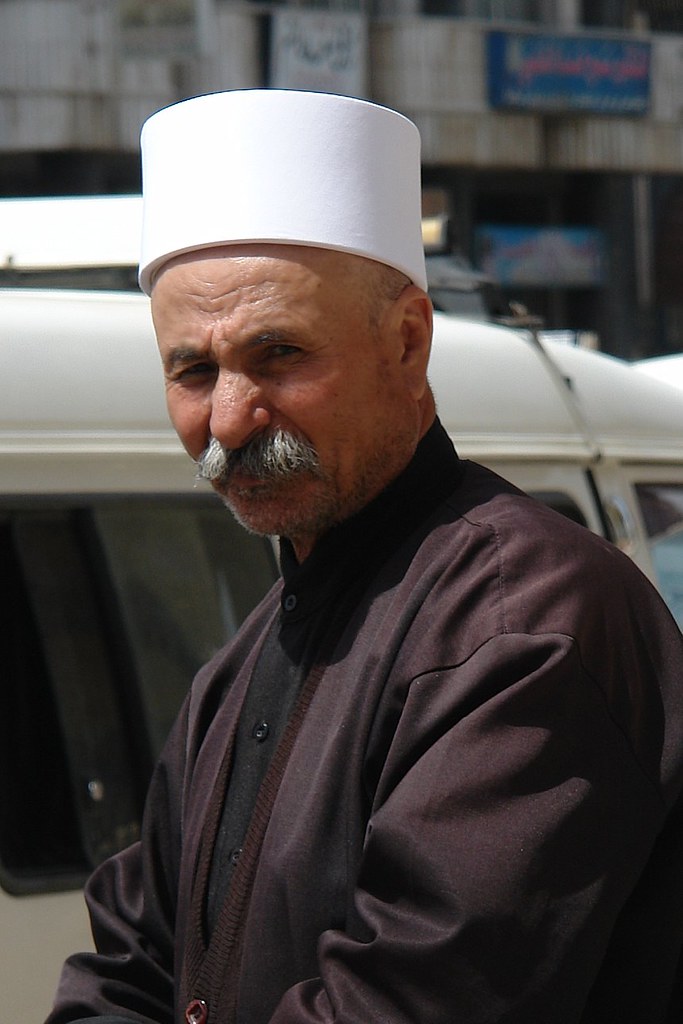
A Druze man photographed in Suweida Syria, 2008.
“In the last two years, the decline of the Russian role within Syrian territories has become clear…”
Russia’s fading presence and loss of influence in southern Syria was on display during recent antiregime protests by the ethnoreligious Druze minority group in the Syrian province of Suweida.[i] As of mid-September, the protests had been going on for over a month. Russia, which had previously mediated between the regime and the Druze, was nowhere to be seen.[ii] Suweida’s protest movement—which has ebbed and flowed throughout the civil war—was motivated by longstanding deterioration in living conditions.
A prominent Druze leader, speaking to protesters who had been injured by regime forces in mid-September, placed blame for the unrest on local Iranian agents and allies. As reported in the first excerpt, from the Lebanese news website al-Modon, he accused them of stealing Syrian wealth and brainwashing its citizens with a “subversive” ideology. Russia’s absence from the volatile situation in Suweida is as noteworthy as are the strident accusations made against Iran and its local allies. In 2018, Russia had established itself as an effective mediator between the Syrian regime and Sunni rebels from Daraa, the province immediately to the west of Suweida. Russia did so by bringing rebel factions into a Russia-controlled proxy force known as the “5th Corps.” Two years ago, as reported in the second accompanying excerpt, from Qatar’s al-Jazeera, Russia began handing control of its southern proxies to the Syrian regime, and Iran took advantage of this situation through its influence in Syrian Military Intelligence and the Syrian Army’s 4th Division.[iii] Druze discontent with Iran’s influence rose due to Iranian proxies and allies in the regime extracting scarce resources from Suweida’s economy—including lucrative cross-border smuggling routes into Jordan and the Gulf. In 2022, a group of Druze leaders sought Russian assistance in curbing Iran’s local influence, on the assumption that Russia maintained sway in this part of Syria. In response, Russia sent a group of lowly military police with no decision-making powers, in what was a clear hint of waning Russian influence.[iv] The situation has only become starker with the Suweida protest movement. Indeed, as of mid-September, the Kremlin had made no official statement on the protests in Suweida, and Russian government-linked media blamed them on the United States, as noted in the third accompanying excerpt, also from al-Modon. The Kremlin is no longer able to provide even the illusion of influence in this part of Syria. Iran, for its part, appears to have solidified its influence in the south, but in doing so has made itself increasingly unpopular.
Sources:
“السويداء:الهجري يدعو للجهاد ضد إيران وميليشياتها..بعد استهداف المتظاهرين بالرصاص
(Suweida: al-Hajiri calls for jihad against Iran and its militias… after protesters shot at),” al-Modon (Lebanese news website), 13 September 2023. https://www.almodon.com/arabworld/2023/9/13/%D8%A7%D9%84%D8%B3%D9%88%D9%8A%D8%AF%D8%A7%D8%A1-%D8%B9%D9%86%D8%A7%D8%B5%D8%B1-%D8%A7%D9%84%D8%A8%D8%B9%D8%AB-%D8%AA%D8%B7%D9%84%D9%82-%D8%A7%D9%84%D9%86%D8%A7%D8%B1-%D8%B9%D9%84%D9%89-%D8%A7%D9%84%D9%85%D8%AA%D8%B8%D8%A7%D9%87%D8%B1%D9%8A%D9%86-%D9%88%D8%AA%D9%88%D9%82%D8%B9-%D8%A5%D8%B5%D8%A7%D8%A8%D8%A7%D8%AA
He considered that the “security movement” that opened fire on demonstrators in Suwayda was the product of the “corrupt” security services that have been tampering with Syria for years, stressing that the demonstrators should not be drawn into the plan of these agencies to attack the people of Suwayda…
He considered that the authority in Iran is “racist and corrupt” and entered Syria in order to “steal the country and its wealth and change people’s minds in a direction they are not convinced of,” stressing that Iran, its militias, and the Lebanese Hezbollah are “occupiers and we do not accept their presence in Syria…and we announce this publicly.”
كعكة الأسد.. هل يقوي مقتل بريغوجين نفوذ إيران في سوريا؟
(Assad’s cake… will the killing of Prigozhin strengthen Iranian influence in Syria),” al-Jazeera (Qatari news outlet), 6 September 2023. https://www.aljazeera.net/midan/reality/politics/2023/9/6/صراع-حول-كعكة-الأسد-هل-يقوي-مقتل
In the last two years, the decline of the Russian role within Syrian territories has become clear. This was not limited to the disappearance of Russian hopes for reaching a political solution to the war that has been going on for more than ten years, but it also amounted to cutting off Russian support for many of Moscow’s agents in Syria…
The Iranians took advantage of this opportunity in order to remove Russia relatively from the scene and capture former proxies whom the Kremlin could no longer support militarily and financially. This happened with the Syrian regime’s Eighth Brigade, one of the most loyal units to Russia within the armed forces in southern Syria, which was reduced. Russia halved the salaries of its members, and in 2022 it completely stopped communicating with the brigade, which prompted the brigade to work for the Syrian Military Intelligence Directorate, one of Iran’s most powerful agents. At the same time, the National Defense Forces militias east of Deir ez-Zor, led by Hassan al-Ghadhban, separated from Moscow. In favor of the Iranian-backed Fourth Division, after Moscow failed to pay the salaries of the members for a full six months.
“موسكو تقرأ إنتفاضة السويداء..من لبنان
(Moscow reads the Suweida uprising… from Lebanon),” al-Modon (Lebanese news website), 5 September 2023. https://www.almodon.com/opinion/2023/9/5/%D9%85%D9%88%D8%B3%D9%83%D9%88-%D8%AA%D9%82%D8%B1%D8%A3-%D8%A5%D9%86%D8%AA%D9%81%D8%A7%D8%B6%D8%A9-%D8%A7%D9%84%D8%B3%D9%88%D9%8A%D8%AF%D8%A7%D8%A1-%D9%85%D9%86-%D9%84%D8%A8%D9%86%D8%A7%D9%86
Although more than two weeks have passed since the Suweida uprising, the Kremlin remains silent about it.
…
What is relatively new this time in accusing the West of being behind the Suweida uprising is the claim of an American plan to destabilize the region by controlling the network of financial flows linked to the crisis in the Lebanese banking system…
On the first of this month, the Topwar website, which is linked to the Russian Ministry of Defense, published a text regarding the Suwayda uprising entitled “The Syrian Protests and the US Strategy in Lebanon”…
Notes:
[i] The Druze are an esoteric, monotheistic ethnoreligious group that constitute 3 percent of Syria’s population, concentrated in Suweida Province. There are also Druze communities on the Syria-Israel border and in Lebanon. Unlike neighboring Sunni-majority Daraa Province—the heartland of Syria’s rebellion—the Druze-majority province of Suweida carved out an effective position of neutrality in Syria’s civil war. By staking out a neutral position, the Druze effectively became “strategic bedfellows” of the Assad regime. See: Fabrice Balanche. “The Druze and Assad: Strategic Bedfellows,” The Washington Institute for Near East Policy, 20 October 2016. https://www.washingtoninstitute.org/policy-analysis/druze-and-assad-strategic-bedfellows
[ii] See for instance: “Syrian government releases detainees with Russian mediation in Syria’s Suwayda,” North Press Agency, 11 July 2020. https://npasyria.com/en/44220/
[iii] For more see: Lucas Winter. ”Growing Iranian Influence Near the Border with Israel in Southwest Syria,” OE Watch, March 2021. https://community.apan.org/wg/tradoc-g2/fmso/m/oe-watch-past-issues/368233
[iv] Key Druze leaders refused to meet with the powerless Russian delegation, which consisted of military police. See: Sources: Eight Demands to Russian Delegation in Suweida,” al-souria.net (Syrian opposition news website) via The Syrian Observer (Syrian media aggregator), 9 August 2022. https://syrianobserver.com/news/77992/sources-eight-demands-to-russian-delegation-in-suweida.html and
السويداء: حركة رجال الكرامة ترفض استقبال وفد روسي
“Suweida: Men of Dignity refuses to meet Russian delegation,” al-Araby al-Jadeed (Qatari-aligned daily), 10 August 2022. https://tinyurl.com/4tsmy3t2
Image Information:
Image: A Druze man photographed in Suweida Syria, 2008.
Source: CharlesFred, Flickr, https://www.flickr.com/photos/charlesfred/
Attribution: CC 2.0

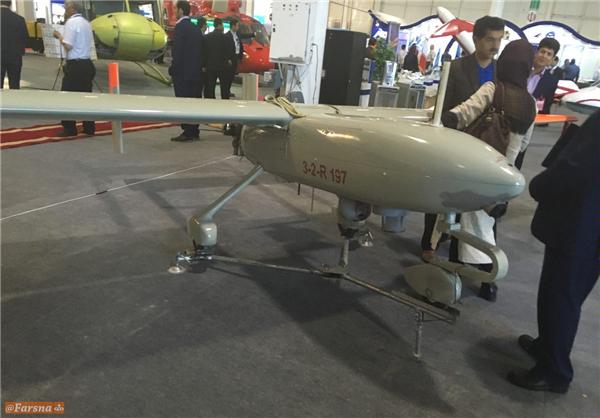


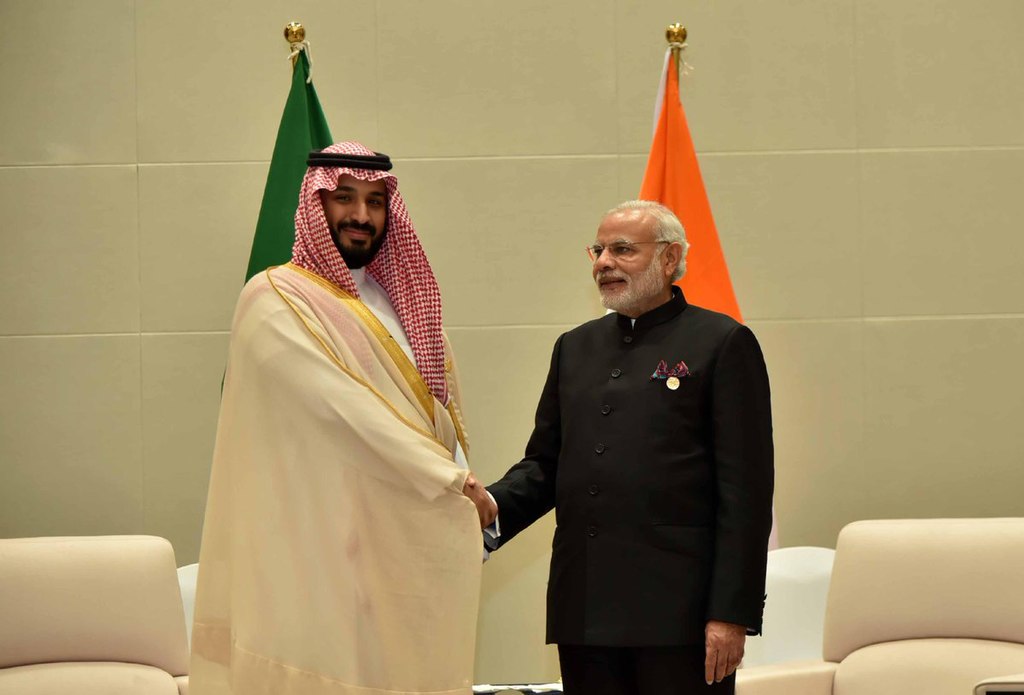
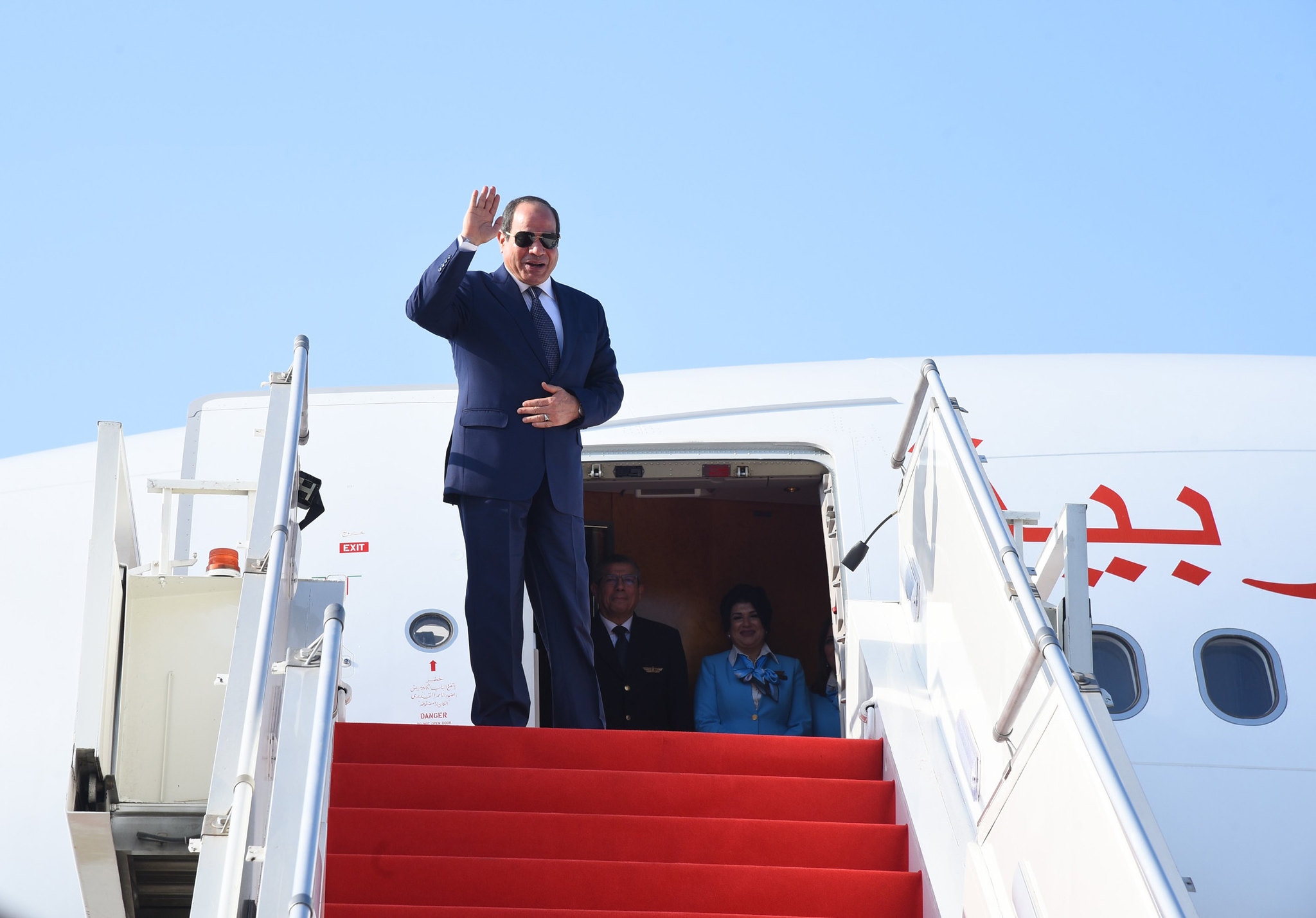
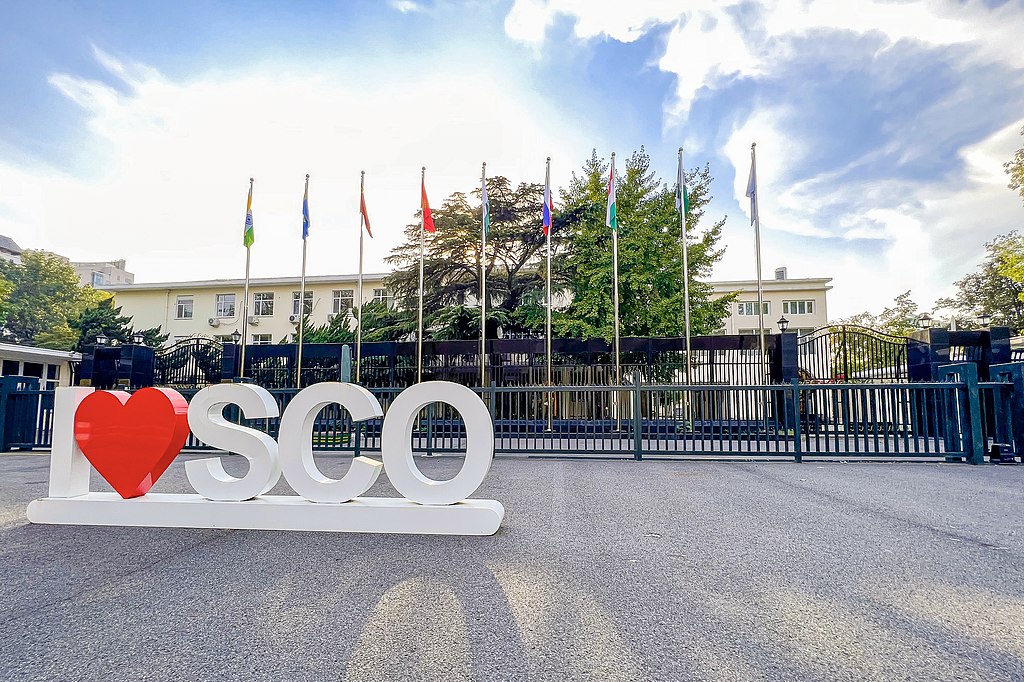
.jpeg)
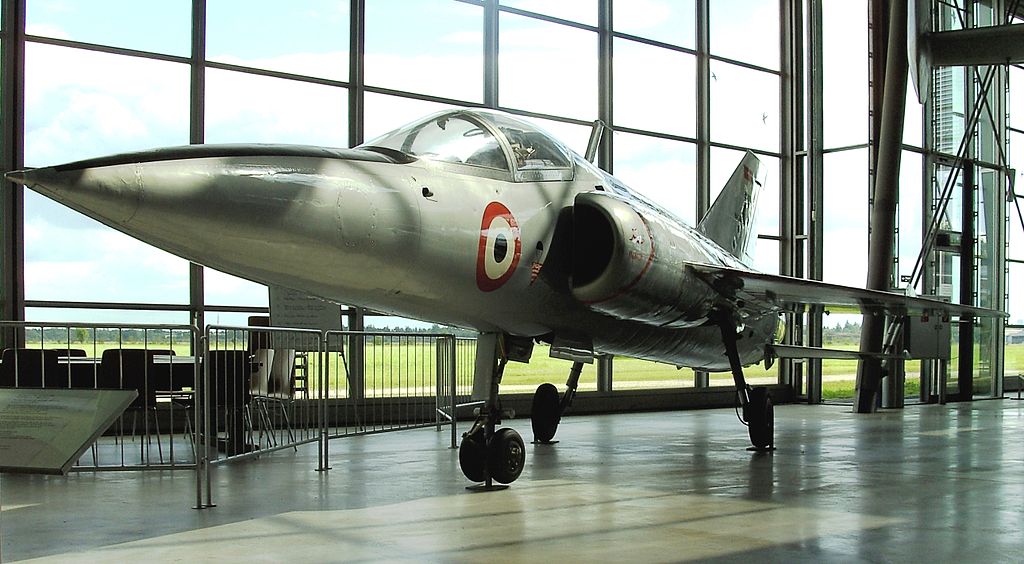
.jpeg)